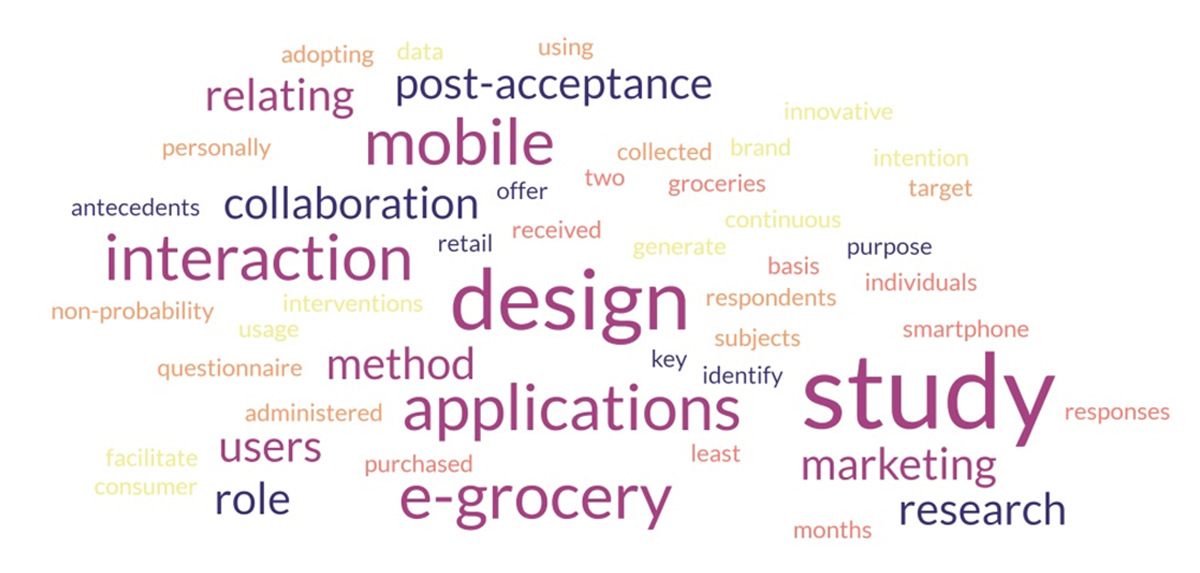
Drivers of Satisfaction and Usage Continuance in E-Grocery Retailing: A Collaborative Design Supported Perspective
The purpose of the study is to identify the key antecedents relating to the interaction design of the e-grocery retail mobile applications and offer innovative marketing interventions to facilitate consumer–brand interaction and generate continuous usage intention. Data were collected from the subjects using a personally administered questionnaire by adopting a non-probability method. The target respondents of this study were individuals who are users of smartphone and have purchased groceries through mobile applications at least once in two months. On the basis of responses received, a sequential predictive analytic method that includes structural equation modelling (SEM) and artificial neural network (ANN) techniques were employed. The findings of the study highlighted the critical role of collaboration design in harbouring satisfaction and maintaining a regular clientele for e-grocery applications by confirming the presence of complementary mediation. Such validated proposition and tested research model backed by significant methodological rigour advances the research based on post-acceptance behavioural affordances in interactive marketing literature. The study endeavours to understand users' post-acceptance behaviour by analysing the contemporary factors relating to the interaction design of the platform in terms of mobile application attributes that would drive user patronage intentions. Further, the study highlights the pioneering role of collaboration design for e-grocery retailers, as the recent alliances among strategic players to achieve synergistic business leadership have proven to be a game-changing evolution in the industry.
Published in: Journal of research in interactive marketing, Vol. 17, Issue 2